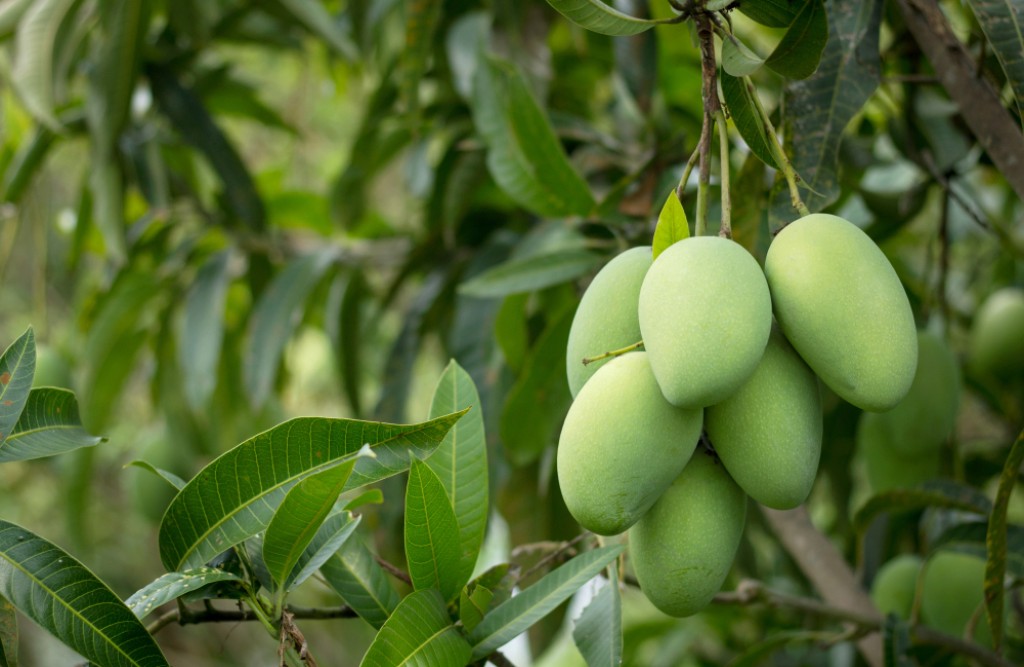
Mango holds the prestigious title of being the national fruit of India, revered as the king of fruits for its exquisite taste and exceptional qualities. It flourishes across the length and breadth of India, as well as in Sri Lanka, Northern Australia, the Philippines, Southern China, Central Africa, and Sudan, thriving in warm and humid climates. India boasts approximately 18 million acres of mango orchards, highlighting its widespread cultivation. Mango is renowned for its versatility; aside from enjoying ripe mangoes as a snack, they are also utilized in making juice and preserves. With a sugar content ranging from 11 to 20 percent, mangoes are cherished for their delightful blend of sweetness and tanginess. Mango cultivation is prevalent across the entire country, reflecting its immense popularity among the populace.
For the cultivation of mango crops, irrigation should be done according to the need, at intervals of 2-3 days in the first year of planting the orchard, and at intervals of 4-5 days from the second to the fifth year. Additionally, when the trees start bearing fruit, it is crucial to provide irrigation two to three times. The third irrigation should be done when the fruits are fully ripe. Mango trees are susceptible to fruit drop due to wind and storms during fruiting. The ideal temperature for mango cultivation ranges from 25 to 30 degrees Celsius. The optimal pH level for mango trees should be between 6 and 7.
Mango cultivation thrives in both tropical and subtropical climates. Successful mango cultivation can be achieved at altitudes of up to 600 meters above sea level. Mango saplings are sensitive to overwatering, and excessive rainfall during flowering is detrimental to fruit development. Mango trees require 1000 to 1150 millimeters of water. Low humidity and strong winds can be detrimental during high temperatures. Mango cultivation, is adaptable to various soil types, with well-draining loamy soil being preferred for optimal water drainage.
During the rainy season, it's ideal to plant mango trees across the nation, particularly in regions with abundant rainfall. The spacing between trees should range from 10 to 12 meters, depending on the sapling variety. However, for the Amrapali variety, the distance should be 2 to 5 meters. In heavy loamy soil, maintain a spacing of 10 meters between trees and rows. In lighter loamy soil, aim for a spacing of 8 meters both between trees and rows. For optimal growth, it's recommended to mix 2 kg of vermicompost, 1 kg of neem cake, bone meal, or single superphosphate with the topsoil of the field while adequately filling the pits.
In July, nitrogen, phosphorus, and potassium should be applied around the tree in a trench dug around each tree at a rate of 100 grams per tree. Following this, to improve the physical and chemical condition of the soil, it is appropriate to provide 25 to 30 kilograms of well-decomposed cow dung manure per tree. For organic fertilizer, mixing 250 grams of Azospirillum with 40 kilograms of cow dung manure in July-August and applying it to the basins enhances production.
Read More... Uttar Pradesh Farmers will increase Mango Farming with Simple Tips
Mango Crop Cycle:
The dependency of crops on a set of nutrients, pests, and disease pressures is reduced by crop rotation. Crop rotation can minimize the need for synthetic fertilizers and pesticides by utilizing ecosystem services from various types of crops. It can improve soil structure and organic matter content in the soil.
Varieties of Mangoes:
Fruit Disease Management: